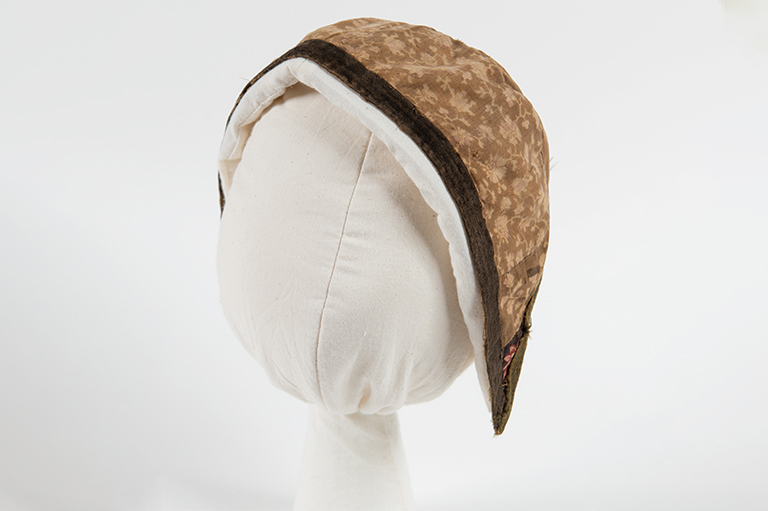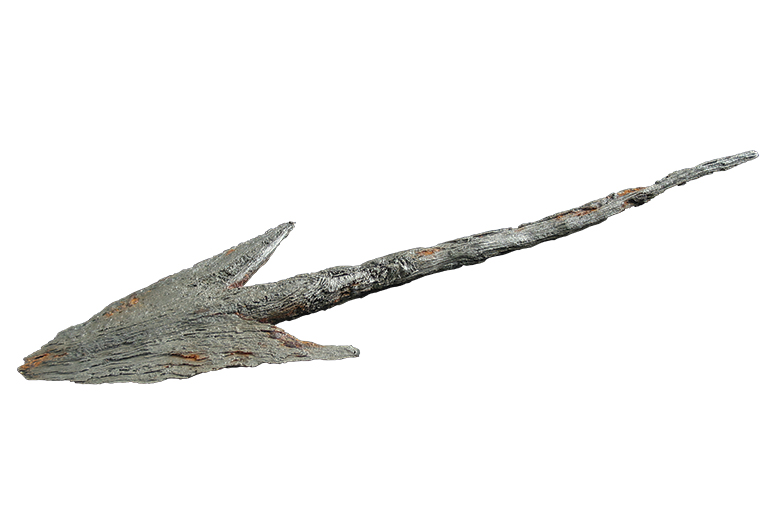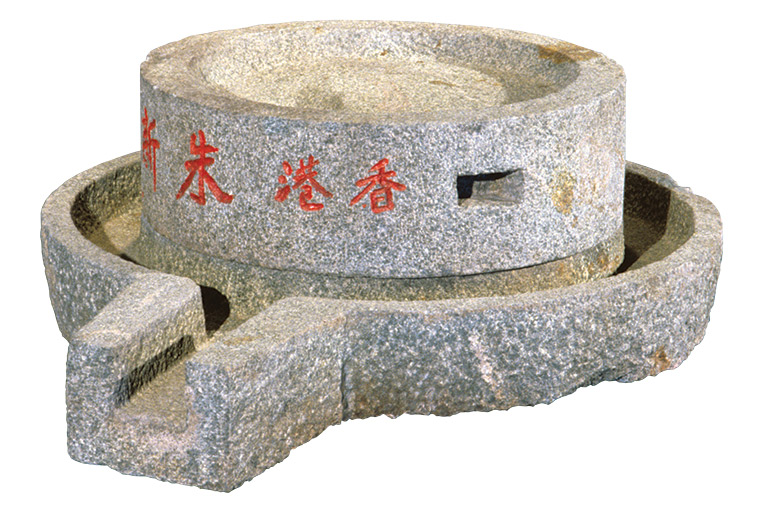Acadian Bonnet

This bonnet, shaped with two points and adorned with red floral fabric, is an example of traditional Acadian fashion. Covering both the head and the ears, these bonnets were most often made from dyed or printed cotton or fine woolen fabrics, decorated with ribbons. The Acadians generally wore brightly coloured bonnets during the working week and white bonnets for church on Sundays .
Originally hailing from the Atlantic coast of France, the Acadians set up their first North American colony in 1604 on Île Sainte-Croix, on the border of present-day Maine and New Brunswick. They then developed several permanent settlements along the coast of Acadia, an area that now comprises Canada’s Maritime provinces .
Following the Treaty of Utrecht in 1713, the French ceded part of Acadia to the British, although the exact borders of the territory remained in dispute. In 1755 the French fort of Beauséjour, on the Chignecto isthmus, fell into the hands of the British. Fearing that the Acadians represented a danger to British rule, governor Charles Lawrence demanded that they swear an oath of allegiance. Faced with their refusal, Lawrence ordered their immediate arrest and deportation.
Settlers from New England who coveted the Acadians’ lands supported the governor. Charles Morris, an influential settler, organized armed men to encircle Acadian churches on a Sunday morning, capture the men, and burn their houses. More than one thousand Acadians were expelled at the point of a bayonet; some were taken to South Carolina, Georgia, or Pennsylvania, while others managed to flee to New France or even to France.
Over the entire duration of the deportation from 1755 to 1763, the number of Acadians torn from their lands in this way is estimated at around ten thousand. A large number of them died on board the ships carrying them into exile. In addition, the governments of the English colonies that were to receive them were not informed of their arrival, which forced the deportees to continue their wanderings. Many of them ended up in Louisiana where they went on to found the Cajun culture.
With 7 uniquely curated newsletters to choose from, we have something for everyone.
Themes associated with this article
Advertisement









